THE CAUCASUS - AT A GLANCE
The Caucasus is the region forming a natural bridge across the broad isthmus of land between the Black Sea and the Caspian Sea.
The region is home to the Caucasus Mountains, including the Greater Caucasus Ranges which form a natural boundary between Eastern Europe and Western Asia. The region covers around 44,000 square kilometers and is predominantly mountainous (Mount Elbrus at an elevation of 5,642 meters is the highest peak in Europe). It extends southward from the lowlands of the Kuma and Manych river basins (the Kuma-Manych Depression) in the north to the northern frontiers of Turkey and Iran in the south.
The Caucasus comprises the independent countries of the South Caucasus (also known as the Transcaucasus) of Armenia, Georgia and Azerbaijan - and the Russian Federation republics and federal regions of the North Caucasus (also known as the Ciscaucasus) of Dagestan, Chechnya, Ingushetia, North Ossetia-Alania, Kabardino-Balkaria, Adygea, Krasnodor Krai and Stavropol Krai*.
A vital trade route and part of the network of ancient Silk Road routes between East and West, the Caucasus has stood at the crossroads of Asian and European cultures as far back as the Bronze Age. Throughout its turbulent history the region located on the peripheries of Turkey, Iran and Russia, has suffered numerous invasions and occupations; being ruthlessly subject to the political, military, religious and cultural rivalries and expansionism for centuries by its powerful neighbouring empires. And even today with internal rivalries and political dissent with the Russian Federation, the Caucasus (particularly the North Caucasus) is not considered a stable zone.
European History On-line describes the Caucasus history:
"The multi-ethnic Caucasus was subject to foreign imperial domination for the great majority of its history, during which it experienced long periods of incorporation in the Persian, Arabian, Mongol, Ottoman, Russian and Soviet empires. In cultural terms, the post-Soviet Caucasus (Armenia, Azerbaijan, Georgia and the autonomous North-Caucasian entities within the Russian Federation) is a heterogeneous region in which the followers of a number of religions (Shiite and Sunni Islam, Russian and Georgian Orthodoxy, the Armenian-Gregorian Church, Judaism) practice their faith.
In essence, the region acts as a transition between East and West, Europe and the Middle East".
Not surprisingly the Caucasus is home to a highly diverse mix of races; with at least 50 different ethnic groups and a wide array of languages.
**Since 18 March 2014, Russia is made up of 85 Federal Subjects. They are grouped into eight Federal Districts. The Federal Subjects are divided into oblasts, republics, krais, autonomous okrugs, federal cities and autonomous oblasts. Republics are generally independent, each having its own constitution and legislature. The North Caucasus Federal District is one of the eight Federal Districts of Russia. It is located in the geographical area of the North Caucasus. The federal district was split from Southern Federal District in January 2010.
TIMELINE SUMMARY FOR THE CAUCASUS REGION**
Circa 10,000 BC Neolithic times
Earliest human
traces in the Caucasus region. Farming begins to replace hunting and
gathering.
Bronze Age
Rise
of the Kuban culture characterised by thousands of burial mounds on the steppes of the Caucasus. Use of copper and bronze for weaponry.
11th Century BC
Scythian* occupation of large swaths of territory throughout Eurasia, from the Black Sea across Siberia to the borders of China.
*The Ancient Greeks gave the name Scythia (or Great Scythia) to all the lands north-east of Europe and the northern coast of the Black Sea.
669-627 BC
Assyrian Empire reaches as far as the Caucasus Mountains. Known as the Empire
of the East, it exists for around six centuries spanning the Bronze Age through to the late Iron Age.
400 - 300 BC
Zoroastrianism
becomes the dominant religion of the region.
321 AD
Formation of the Armenian Empire
Christian
missionaries reach the Caucasus. Introduction of Christianity.
Conquests
in the Caucasus by Alexander the Great
6th Century AD
Sassanid
(Persian) Empire conquers the eastern Caucasus (present day Dagestan).
Up until
the early 19th century, the Persian Empire mostly controls the
southern Caucasus and Dagestan.
7th Century AD
Arab
invasion and partial introduction of Islam.
9th Century AD
Formation
of the Kingdom of Georgia
10th Century AD
The state of Alania created by the Christian Alans, ancestors of the
modern Ossetians. The region flourishes and rules most of the Northern
Caucasus.
12th Century AD
Georgian King David the Builder drives Muslims from the Caucasus and makes the Kingdom of Georgia a strong regional power. From 1194 - 1204 Georgian Queen Tamar's forces crush Turkish invasions. Georgia becomes the strongest Christian state in the Caucasus - Near East area.
13th Century AD
Mongols
invade from the east. Later in the century, invasion and mass destruction by Tamerlane (Timur) from
Central Asia
14th and 15th
Centuries AD
Tartar
rule puts an end to a period of Islamic Persian and Ottoman Empire dominance.
16th Century AD
Caucasus continues to serve as a battleground
between Persian and Ottoman forces, with the two great powers attempting to
gain control over the region.
18th Century AD
Formation of the
Russian Empire, the third largest empire to ever exist in the world (after Britain and the Mongols). Beginning of Russian penetration into the Caucasus. Peter The Great begins the Russian penetration into the Caucasus, occupying Derbent, Dagestan and Baku, Azerbaijan. Persia then cedes a wide area of khanates of
the eastern Caucasus.
19th Century AD
1804-13 & 1826-28 Russo-Persian Wars. Russia contests dominance of Ottoman Turkey and Safavid Iran over the Caucasus.
1817 - 1864 Caucasian War. Russian Empire invades and annexes areas of the North Caucasus. Circassian Massacre and ethnic cleansing of indigenous
peoples from the Black Sea coast, most of whom are expelled to the Ottoman Empire.
20th Century AD
1914-18 World
War I.
1917-22 Russian Revolution and Civil War.
Collapse of the Russian Empire. Muslim
dominated parts of the Caucasus divided into five autonomous regions: Dagestan,
Chechnya, Adygea, Karbardino-Bulkaria and Karachay-Cherkessia.1922 Establishment of the Soviet Union (officially
the Union of Soviet Socialist Republics or USSR).
Mid-1920’s to 1953, Joseph Stalin leads the Soviet Union. Mass repressions, ethnic cleansing, mass deportations, hundreds of
thousands of executions, and famines which killed millions.
1939-45
World War II.
1942 Battle of the Caucasus. German troops capture Rostov on Don, Russia, with the aim of opening the Caucasus region of the
southern Soviet Union, and the oil
fields beyond at Maykop, Grozny, and ultimately Baku, to the Germans. Following a decisive
German defeat at Stalingrad (often referred to as the turning point of WW II), German troops in the Caucasus are forced to retreat.
1944 On pretext of collaboration with the German forces, Stalin orders mass deportation
of Balkar, Chechen, Ingush and Karachay peoples to Central Asia and Siberia.
1991 Collapse
of the Soviet Union.
1991 - 2009
Territorial
disputes are triggered in the Caucasus, including the Nagorno-Karabakh War (1988-1994)
between majority ethnic Armenians and Azerbaijan), the East Prigorodny Conflict
(1989-1991) an inter-ethnic conflict in the eastern part of the Prigorodny
district in the Republic of North Ossetia – Alania, the War in Abkhazia (1992-93) largely between
Georgia and Russian government and Abkazian separatists; and the First and Second
Chechen Wars (1994-96 and 1999-2009) between separatist Chechens and the
Russian government.
To 2019 Insurgency incidents and terrorist activities continue within the North Caucasus and the Russian Federation***.
Commentators in more recent years report however that the situation is stabilising and that the region has over more recent years, become relatively peaceful.
**As a mere observer, I am reporting on only the incidents on this timeline as they appear in the literature I have read, and which is available to me.
***I understand there are numerous theories and opinions as to the cause, nature and outcomes of the conflict and insurgency in the North Caucasus, and in terrorist attacks in the Russian Federation.

 Makhachkala, Republic of Dagestan, Russian Federation
Makhachkala, Republic of Dagestan, Russian Federation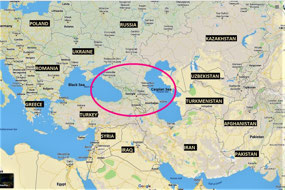

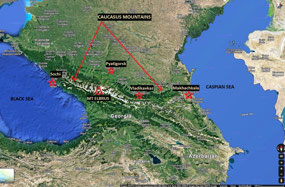
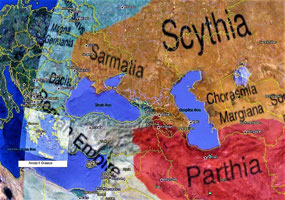
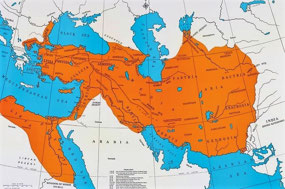

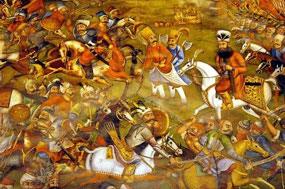
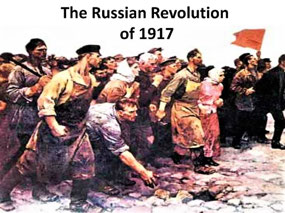




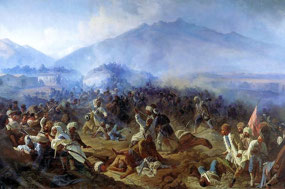
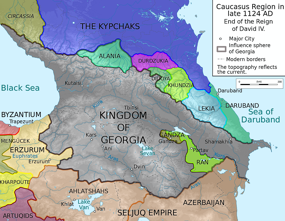
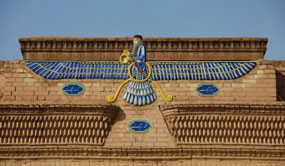
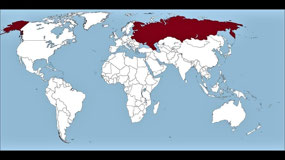
Geoff N
2019-08-21
great summary of events over the years :-)
P
2019-09-23
Very interesting time line.****